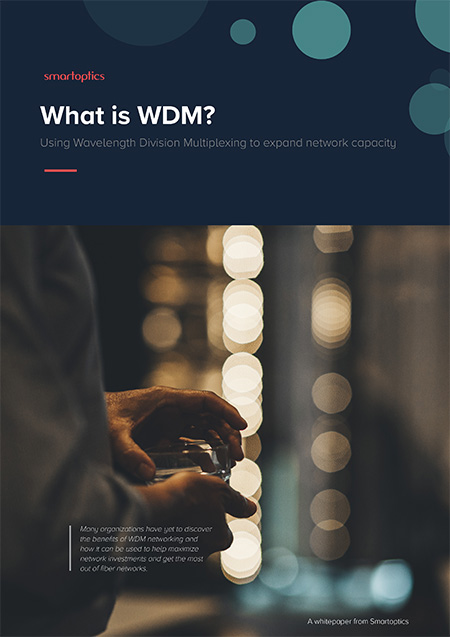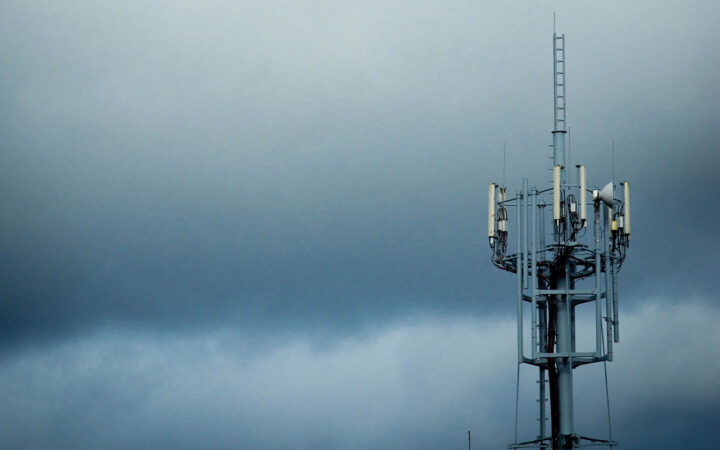Optical transceivers – turning data into light
In the first article of our series on WDM, The basics of dark fiber networks, we compared a fiber optic network to a powerful multi-lane expressway, capable of transporting traffic between various sites. And just as we have traffic rules for driving, different traffic rules are needed to transport our optical traffic. These are called protocols. Below, we describe the three key protocols for storage, data and voice, respectively.
What is an optical transceiver?
An optical transceiver is a small yet powerful device that can both transmit and receive data. In fiber optics, this data is sent in the form of pulses of light over an optical fiber, at very high speeds and across long distances. Optical transceivers are an important part of a fiber optics network and is used to convert electrical signals to optical (light) signals and optical signals to electrical signals. They can be plugged into or embedded into another device within a data network that can send and receive a signal.
Optical transceivers come in different shapes and sizes, called form factors. Which form factor to use depends on the type of data, speed and distance needed. Different rules, called protocols, determine how the different kinds of data are transmitted.
Read the first article of our series on WDM, The basics of dark fiber networks, here.
The traffic rules of fiber optic communication
Fibre Channel, or FC: A high-speed networking technology primarily used to connect computer data storage to servers. Fibre Channel is mainly used in storage area networks in enterprise storage. FC networks are known as a fabric because they operate in unison as one big switch. Fibre Channel typically runs on optical fiber cables within (data center connectivity) and between data centers (data center interconnect).
Ethernet: Networking technologies mainly used for connecting a number of computer systems to form a local area network, with protocols to control the passing of information and to avoid simultaneous transmission by two or more systems.
Synchronous optical networking (SONET) and Synchronous Digital Hierarchy (SDH): SDH is a standard technology for synchronous data transmission on optical media. It is the international equivalent of SONET, which is used in the US and Canada. Both technologies provide faster and less expensive network interconnection than traditional Plesiochronous Digital Hierarchy (PDH) equipment.
From electricity to light (and back again)
To transport all this traffic over an optical network, whether it be FC, Ethernet or SONET/SDH, a component called an optical transceiver is needed. Transceivers are wavelength-specific lasers that convert electrical data signals from data switches into optical signals. These signals can then be transmitted over the optical fiber. Each data stream is converted to a signal with a unique wavelength, meaning that it is effectively a unique light color. The signals can be wideband 850nm, 1310nm or 1550nm, or narrow band CWDM or DWDM wavelengths.
Due to the physical properties of light, no channel can interfere with the next – they are completely separated from each other. Each channel is transparent to the speed and type of data, meaning that any mix of SAN, WAN, voice and video services can be transported simultaneously over a single fiber or fiber pair in a WDM system.
Typically, the output power and receiver sensitivity of an optical transceiver determines how far the traffic can travel. It also has a value that defines the amount of optical power available to successfully transmit signals over a distance of optical fiber. We will come back to this so-called optical power budget in our next article.
Optical transceiver form factors
A form factor specifies the physical dimensions of the transceiver – its shape and size. The size varies depending on speeds and protocols, and over time has tended to get bigger with increasing line speeds. In general, manufacturers design according to the Multisource Agreement (MSA). This is a standard for ensuring that the same form-factor transceivers from different vendors are compatible in size and function, ensuring interoperability.

From left: Gbic, SFP, SFP+

From left: CFP, CFP2, CFP4, QSFP28
Transceiver and wavelength types
Depending on the type of data to be transported, and at what speed and distance, different transceivers are available for the different tasks. There are three main categories of optical transceiver types:
Grey (standard). A standard transceiver, often referred to as a grey transceiver, is a single-channel device. Since xWDM signals are colored wavelength channels, any signal that is not xWDM is typically referred to as an uncolored, or a grey signal.
Grey transceivers typically have two main applications. First, they can be connected directly to a single fiber channel or Ethernet data switch to transport data in the form of light over a dark fiber. Second, they can act as an optical interface on the client side of a transponder-based xWDM system (more on transponders in our next installment).
There are four standard transceiver types, each with its own transmission distance:
SR - Short Range, 850nm
LR - Long Range, 1310nm
ER - Extended Range, 1550nm
ZR - Further Extended Reach, 1550nm
Single fiber (bi-directional). A bi-directional transceiver uses two independent wavelength channels, one to transmit and one to receive traffic over a single fiber strand. In the same way that our undivided highway has one channel traveling in one direction and another channel traveling in the opposite direction, this is how a bi-directional transceiver works. Usually it uses channels 1310nm and 1550nm, but for longer distances, two CWDM channels are used, usually 1510nm and 1570nm.

Fiber pair used for transmitting and receiving data on different fibers.
Bi-directional transceivers used to transmit and receive data over single fiber.
CWDM/DWDM. Together referred to as xWDM transceivers, these are different wavelength patterns – coarse and dense – in a wavelength-division multiplexing (WDM) system. Just as with grey transceivers, they have two fundamental applications.
First, they can connect directly to a data switch to transport an xWDM wavelength over a dark fiber. Usually, an LC patch cable connects the transceiver to a multiplexer so that other xWDM channels can also be sent simultaneously over a dark fiber network. And second, they act as the output (or line) signal from a transponder-based xWDM system.
Transceivers with xWDM functionality
| QSFP-28 | |||
| DWDM (100GHz) | 80km (20dB) | ||
| SFP+ | |||
| CWDM | 10km (10dB | 40km (14dB) | 70km (23dB) |
| DWDM (100GHz) | 40km (14dB) | 80km (23dB) | |
| DWDM (50GHz) | 40km (14dB) | 80km (23dB) | |
| DWDM (Full C-Band Tunable) | 80km (22dB) | ||
| XFP | |||
| CWDM | 10km (10dB) | 40km (14dB) | 70km (23dB) |
| DWDM (100GHz) | 40km (14dB) | 80km (24dB) | |
| DWDM (50GHz) | 40km (14dB) | 80km (23dB) | |
| DWDM (Full C-Band Tunable) | 40km (14dB) | 80km (22dB) | |
| SFP | |||
| CWDM | 10km (10dB) | 40km (14dB) | 70km (23dB) |
| DWDM (100GHz) | 40km (14dB) | 80km (23dB) | |
| DWDM (50GHz) | 40km (14dB) | 80km (23dB) | |
| DWDM (Full C-Band Tunable) | 80km (22dB) |

Related articles

What is a SAN ( Storage Area Network) and how does it protect mission-critical workloads?

What is Fibre Channel used for?
